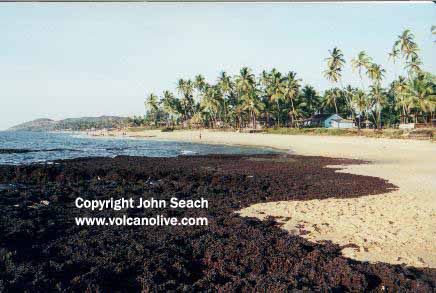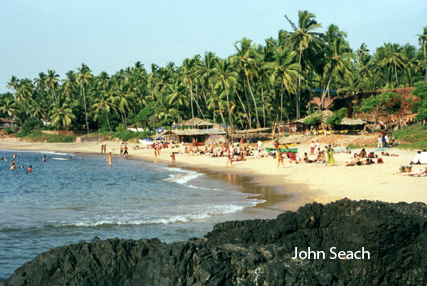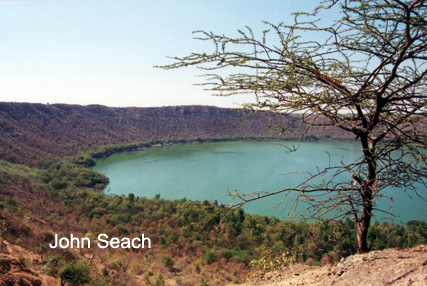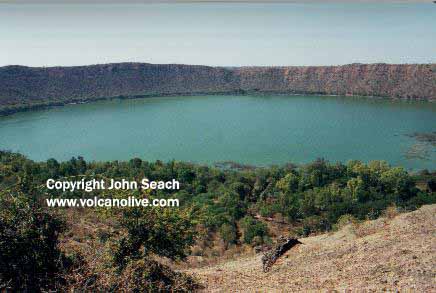Volcano Live
volcanolive.com
Deccan Volcano | John Seach

The Deccan Traps is located in central west India and dates from 66 million years ago. The lava flows are some of the largest on earth covering 900 km and meet the coast at the Arabian Sea. Deccan volcanism coincided with the decline of the dinosaurs raising the possibility that the Indian volcanoes were involved with their decline.
Deccan Traps photos by John Seach

Deccan lava meets the Arabian Sea at Goa. The lava flows cover 900 km throughout central and western India.
The Reunion mantle plume was responsible for the lava flows which covered 500 000 sq km.

Lava meets the sea at Goa, India

Lonar meteorite crater, Deccan volcano basalt, India

Lonar Meteorite crater in central India. This is the only hypervelocity impact crater in Bassalt rock. This interesting combination shows asteroid impact in Deccan lava. Asteroid impact or Deccan volcanism may have been the trigger for the decline of the dinosaurs 65 million years ago.
Further reading
Basu, A.R., Saha-Yannopoulos, A. and Chakrabarty, P., 2020. A precise geochemical volcano-stratigraphy of the Deccan traps. Lithos, 376, p.105754.
Bondre, N.R., Duraiswami, R.A. and Dole, G., 2004. Morphology and emplacement of flows from the Deccan Volcanic Province, India. Bulletin of Volcanology, 66(1), pp.29-45.
Sheth, H.C. and Chandrasekharam, D., 1997. Plume-rift interaction in the Deccan volcanic province. Physics of the Earth and Planetary Interiors, 99(3), pp.179-188.
Mitchell, C. and Widdowson, M., 1991. A geological map of the southern Deccan Traps, India and its structural implications. Journal of the Geological Society, 148(3), pp.495-505.
Deccan Volcano Eruptions
66 million years ago.